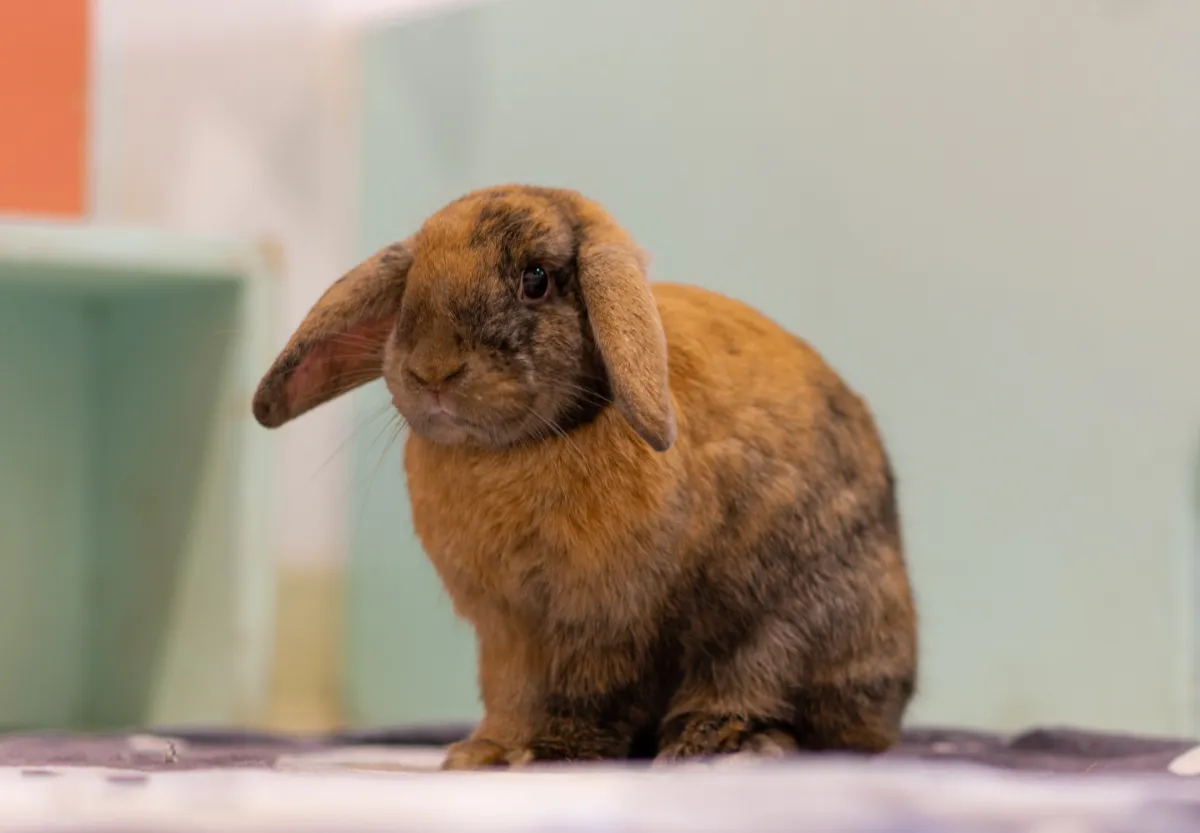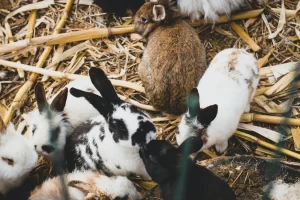Are you ready to become your rabbit’s very own superhero? When it comes to treating wounds at home, you have the power to provide quick and effective care. In this article, we’ll guide you through the steps of identifying, cleaning, and applying first aid techniques for rabbit wounds.
We’ll even share natural remedies for speedy healing. With your knowledge and care, you can ensure your furry friend’s well-being and prevent infections.
Let’s dive in and become the hero your rabbit needs!
In This Article
- 1 Key Takeaways
- 2 Identifying and Assessing the Wound
- 3 Cleaning and Disinfecting the Wound
- 4 Applying First Aid Techniques for Rabbit Wounds
- 5 Using Natural Remedies for Rabbit Wound Healing
- 6 Monitoring and Preventing Infections in Rabbit Wounds
- 7 Frequently Asked Questions
- 7.1 Can I Use Hydrogen Peroxide to Clean My Rabbit’s Wound?
- 7.2 Is It Safe to Use Essential Oils for Wound Healing in Rabbits?
- 7.3 How Long Does It Typically Take for a Rabbit Wound to Heal?
- 7.4 Can I Use Over-The-Counter Antibiotic Ointments on My Rabbit’s Wound?
- 7.5 What Are the Signs of an Infected Rabbit Wound That I Should Look Out For?
- 8 Conclusion
Key Takeaways
- Clean the area around the wound with mild soap and warm water
- Thoroughly clean and disinfect the wound using an antiseptic solution
- Apply pressure to the wound with a sterile gauze pad and cover with an adhesive bandage
- Monitor the wound for signs of infection and seek veterinary help if necessary
Identifying and Assessing the Wound
You need to closely examine the wound to determine its severity and identify any potential complications. Start by gently cleaning the area around the wound with mild soap and warm water. Use a clean cloth or cotton ball to dab the wound dry.
Once the wound is clean, take a closer look at it. Look for any signs of infection such as redness, swelling, or discharge. Evaluate the severity of the wound by assessing its size, depth, and location.
If the wound is deep, bleeding profusely, or shows signs of infection, it’s important to seek veterinary assistance immediately. Remember, it’s always better to be safe than sorry when it comes to your rabbit’s health.
Cleaning and Disinfecting the Wound
Make sure to thoroughly clean and disinfect the wound using an antiseptic solution, such as hydrogen peroxide or iodine, to prevent any potential infections. Treating minor rabbit wounds requires meticulous care and attention to ensure proper healing. Here are the steps for wound care:
| Step | Instructions |
|---|---|
| Step 1 | Gently clean the wound with a mild soap and water. Pat it dry with a clean cloth or gauze. |
| Step 2 | Apply the antiseptic solution to the wound using a cotton swab or sterile gauze. Make sure to cover the entire wound area. |
| Step 3 | Allow the antiseptic solution to dry and form a protective barrier. It is crucial to prevent the rabbit from licking or scratching the wound during this time. |
Applying First Aid Techniques for Rabbit Wounds
To effectively treat rabbit wounds, carefully apply pressure to the wound with a sterile gauze pad and cover it with an adhesive bandage, ensuring that the wound is protected and doesn’t get infected. Here are some home remedies and wound care techniques to help you provide the best care for your furry friend:
- Clean the wound: Gently clean the wound using a mild antiseptic solution to prevent infection.
- Apply topical ointment: After cleaning, apply a rabbit-safe topical ointment to promote healing and prevent further infection.
- Monitor for signs of infection: Keep an eye out for any redness, swelling, or discharge around the wound. If you notice any of these signs, consult a veterinarian for further treatment.
Using Natural Remedies for Rabbit Wound Healing
Combine the healing properties of aloe vera and the soothing effects of chamomile to naturally promote rabbit wound healing.
Natural remedies have gained popularity in recent years due to their numerous benefits and as alternative wound healing options. Aloe vera is known for its anti-inflammatory and antibacterial properties, making it an excellent choice for treating wounds. It helps to reduce swelling, relieve pain, and accelerate the healing process.
Chamomile, on the other hand, has soothing properties that can calm irritated skin and promote faster healing. It also has antimicrobial properties that can help prevent infection. By using a combination of aloe vera and chamomile, you can provide your rabbit with a safe and effective natural remedy for wound healing.
Remember to consult with a veterinarian for proper guidance and dosage instructions.
Monitoring and Preventing Infections in Rabbit Wounds
You should regularly inspect your rabbit’s wounds and apply antibiotic ointment to prevent infections. Here are three important steps to follow in order to effectively monitor and prevent complications in your rabbit’s wounds:
- Inspect the wound: Carefully examine the wound for any signs of infection such as redness, swelling, or discharge. If you notice any of these symptoms, it’s important to act quickly to prevent further complications.
- Clean the wound: Clean the wound with a mild antiseptic solution and gently pat it dry. This helps remove any dirt or debris that could potentially cause infection.
- Apply antibiotic ointment: After cleaning the wound, apply a thin layer of antibiotic ointment to promote healing and prevent infection. This helps create a protective barrier against bacteria and other harmful microorganisms.
Frequently Asked Questions
Can I Use Hydrogen Peroxide to Clean My Rabbit’s Wound?
You shouldn’t use hydrogen peroxide to clean your rabbit’s wound. There are safer alternatives and natural remedies available for rabbit wound healing. It’s important to treat your rabbit’s wounds properly for their well-being.
Is It Safe to Use Essential Oils for Wound Healing in Rabbits?
Using essential oils for rabbit wound healing is not recommended. Stick to proven methods like cleaning the wound with mild antiseptic and applying a rabbit-safe wound ointment. Consult a veterinarian for alternative wound healing methods.
How Long Does It Typically Take for a Rabbit Wound to Heal?
Rabbit wounds vary in healing time, depending on the severity. It’s important to consider alternative methods for wound healing in rabbits, such as proper wound care, diet, and seeking veterinary advice.
Can I Use Over-The-Counter Antibiotic Ointments on My Rabbit’s Wound?
You should avoid using over-the-counter antibiotic ointments on your rabbit’s wound. Instead, consider using alternative wound care methods that are safe and effective. This will help prevent infection in rabbit wounds and promote healing.
What Are the Signs of an Infected Rabbit Wound That I Should Look Out For?
Look out for signs of infection in a rabbit wound: redness, swelling, pus, foul odor. Potential complications include abscess formation and systemic infection. Treatment options may include cleaning the wound, providing antibiotics, and consulting a veterinarian.
Conclusion
In conclusion, when treating rabbit wounds at home, it’s crucial to accurately identify and assess the wound, followed by thorough cleaning and disinfection.
Applying first aid techniques and using natural remedies can aid in the healing process. However, it’s important to monitor the wound for any signs of infection and take preventive measures.
As the saying goes, ‘An ounce of prevention is worth a pound of cure,’ taking proper care of rabbit wounds can ensure their well-being and speedy recovery.





